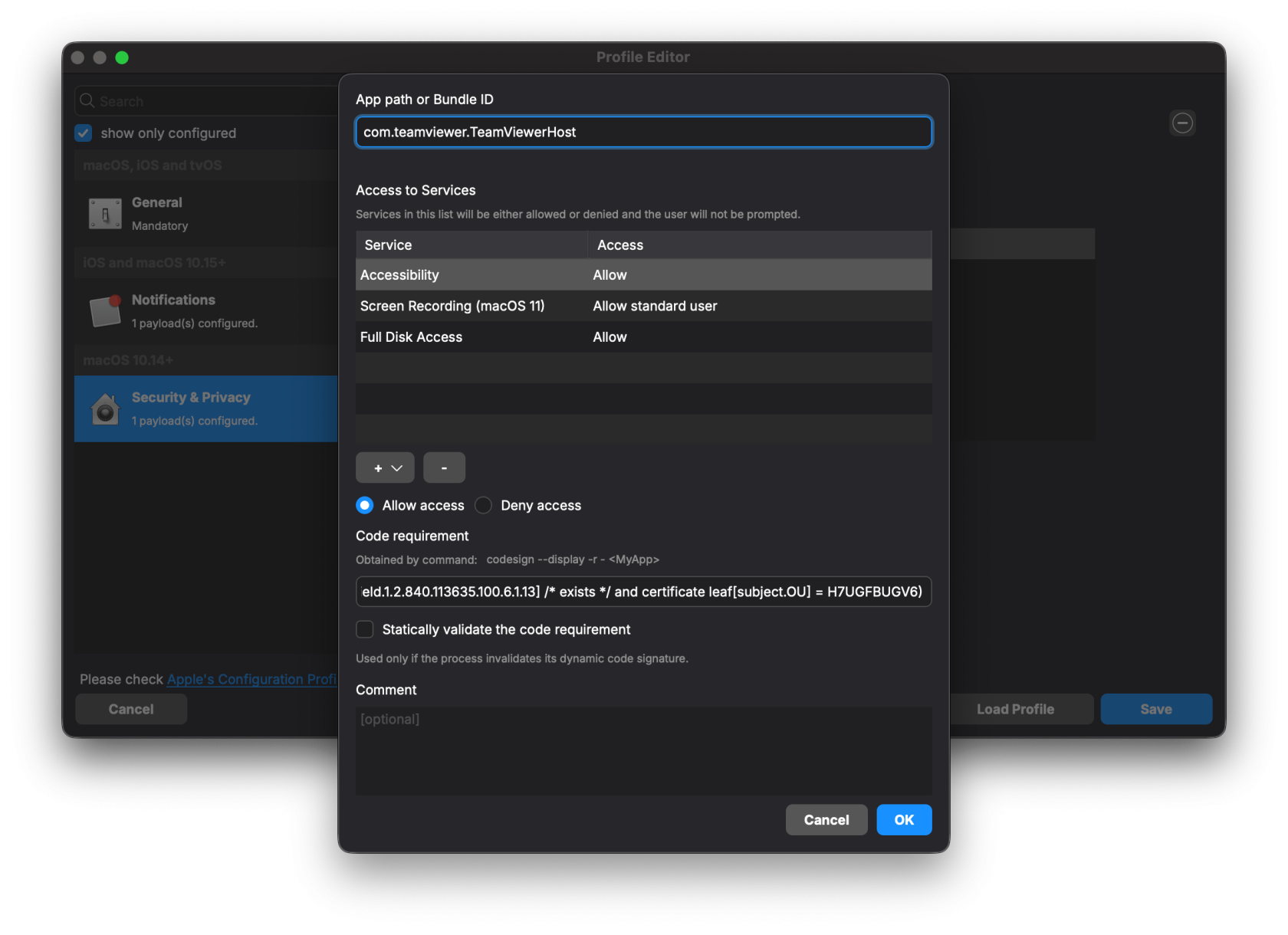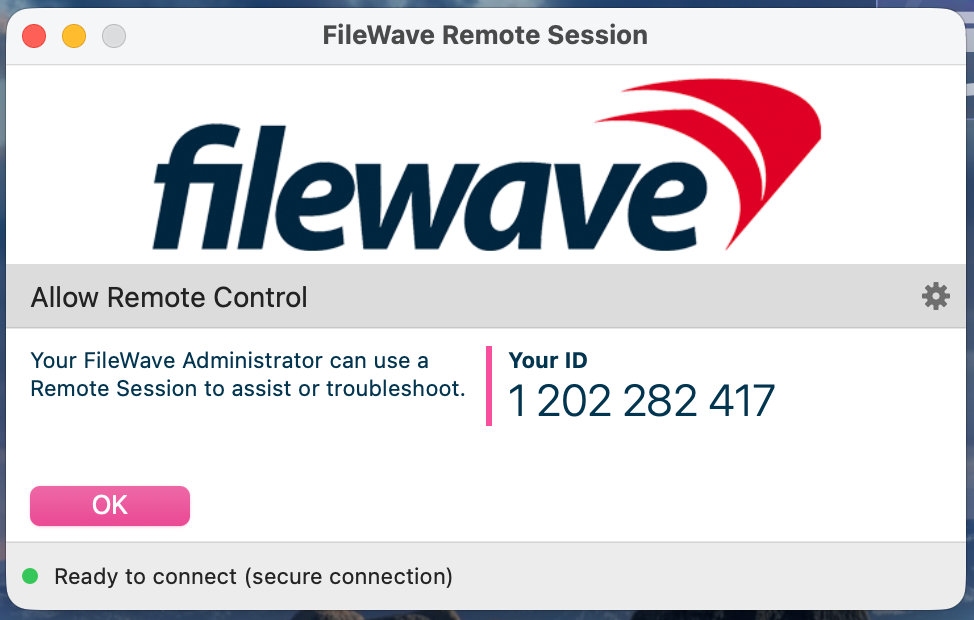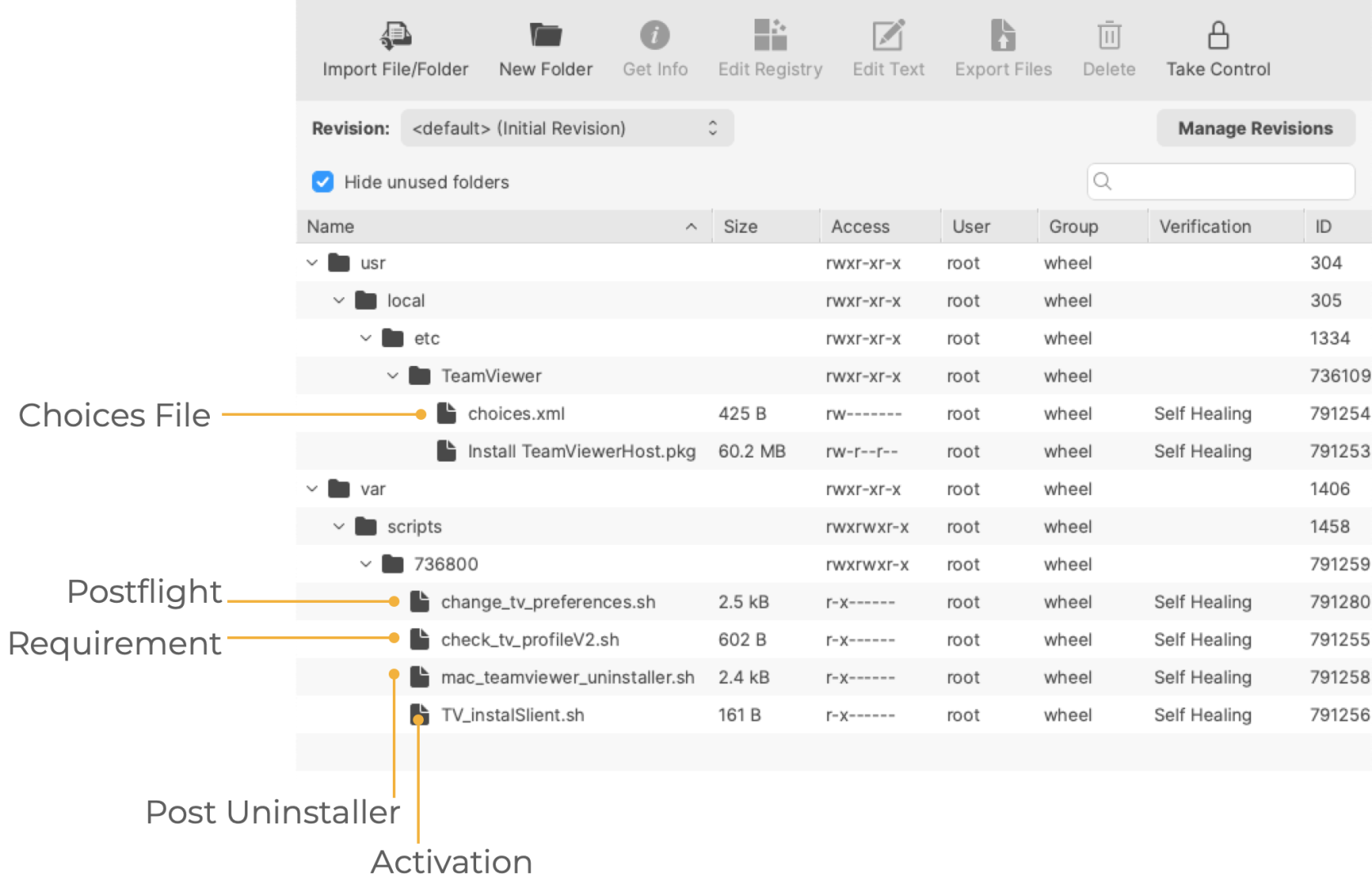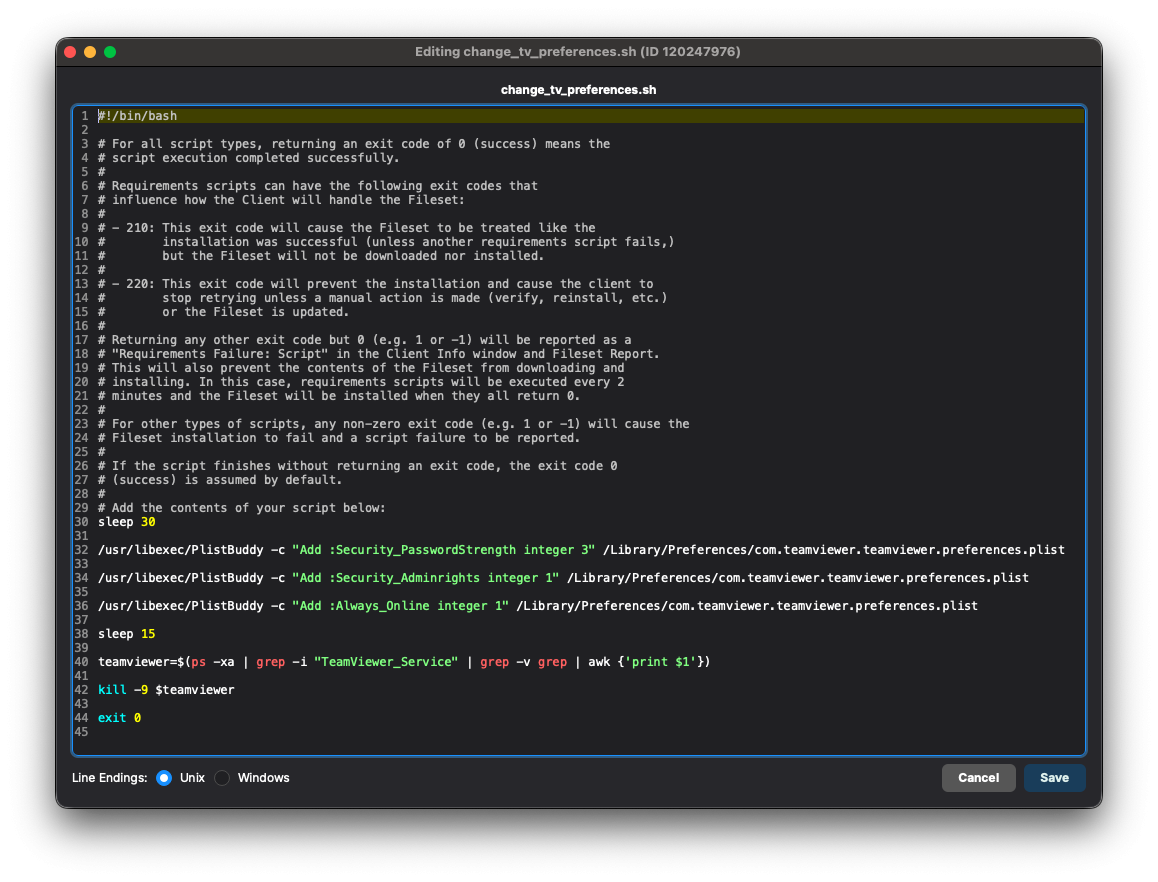TeamViewer: macOS Client Setup
What
FileWave version 14.7 introduced a TeamViewer integration that requires endpoint prerequisites on each supported platform. The majority of these have been left untouched, but may be altered, allowing slightly more work (if desired) but much greater control.
When/Why
TeamViewer is used to remotely control your clients, providing access to a device for troubleshooting or assisting a user. TeamViewer for macOS differs from other OSs since it requires a few privacy permissions before allowing TeamViewer to be installed.
How
Prerequisites for macOS client devices must be met for TeamViewer to work seamlessly:
-
General TeamViewer Prerequisites are met, ensuring that clients are set to allow remote control
-
Profile for TeamViewer Host - Notifications, Accessibility, and Full Admin Access
- *TeamViewer Full Client Application is installed on the device initiating the session.
*The TeamViewer Full Client application is only necessary for computers that need to remotely connect to other computers. You can download the TeamViewer Full Client here: https://www.teamviewer.com/en-us/download/portal/
The below describes the process for deploying and configuring the TeamViewer Host application. The Host application is only allowed to accept connections and not initiate them, and is highly recommended for client deployment.
TCC Profile for TeamViewer Host - Accessibility, Notifications, Screen Recording, and Full Admin Access
Screen Recording is a privacy setting that can not be allowed by anyone other than a local user. Standard Users do not have permissions to allow Screen Recording by default. In the current Profile, the option to allow a non-Admin to accept Screen Sharing is enabled.
This option is available starting in macOS Big Sur (11). If you have clients running older versions, please deploy the Legacy profile.
Privacy Settings Profiles
Permissions to allow TeamViewer access rights.
TCC Profile for TeamViewer Host (current):
Profile - TeamViewerHost15.fileset
TCC Profile for TeamViewer Host (Legacy, before macOS Big Sur):
Profile - TeamViewerHost15 < macOS Big Sur.fileset
TeamViewer Host Fileset
The included Fileset utilizes a settings file, set to install the software silently. This Fileset is current at the time of this article's publishing date.
Current TeamViewer Fileset: macOS TeamViewer Host Install 15.70.4.fileset.zip
Fileset Contents:
The choices.xml file is configured to install the .pkg silently.
Requirement Script:
Where the software is already installed and services are active, privacy settings payloads subsequently require the service of that software to be restarted after installation. The attached Fileset includes a Requirement Script that checks for profile installation before activating TeamViewer, preventing the need to restart the TeamViewer Host service.
The 'check_tv_profile.sh' script is designed to recognise one of the two provided Profiles and, once installed, allow activation of the Fileset. If Profiles with a different Profile ID are used instead of those supplied, the script settings will require alteration.
- Double-click the Fileset
- Select the 'check_tv_profile.sh' (located in a numbered subfolder in /var/scripts/)
- Choose Get Info > Executable view
The Launch Arguments show the two possible Payload IDs, one for the current Profile and one for the legacy profile. No changes are needed if you're only using one Profile. Add in the correct Fileset Profile ID if not using the provided ones.
Activation Script:
The script in this case is installing the PKG. Note that the script allows the specification of the 'choices.xml' file when executed.
#!/bin/zsh
installer -applyChoiceChangesXML /usr/local/etc/TeamViewer/choices.xml -pkg "/usr/local/etc/TeamViewer/Install TeamViewerHost.pkg" -target /
exit 0Postflight
This script provides examples of configuring the TeamViewer Host. Three settings are configured, which may be removed/not changed by selecting the Postflight Script and deleting the file from the Fileset:
Possible Values:
| Setting | Value | Outcome |
| Security_Adminrights | 0 | Any user may change settings |
| 1 (Recommended) | Only administrators may change settings | |
| Security_PasswordStrength |
3 (Recommended) | No password - Will not allow other devices outside of the FileWave API to connect |
| 2 | 10 Character Password | |
| 1 | 6 Character Password | |
| 0 | 8 Character Password | |
| Always_Online |
0 | False: TeamViewer will not start again if it's forced to close |
| 1 (Recommended) | True: TeamViewer will start again if it's forced to close |
Setting No Password for password strength prevents anything other than FileWave from connecting to devices through TeamViewer Host.
Post-Uninstallation Script:
The 'mac_teamviewer_uninstaller.sh' script uninstalls TeamViewer if an association or deployment no longer exists.
Updates
The software should auto-update to the latest version. If you would like the latest installer, you can download it from https://go.filewave.com/tvhost. If you're on a macOS system, the PKG will download. If you're on Windows, the EXE will download.
Don't forget to upgrade the full TeamViewer version on the Admin device.






Can you confirm that Security_Adminrights is still a valid .plist key? I didn't see it referenced within the "com.teamviewer.teamviewer.preferences.plist" file. After setting the key to "1", standard users are still able to edit the TeamViewer settings.
In reply to #1
This value does indeed work as suggested in the current text. However, the TeamViewer process must be restarted after setting the value.
If you have an older version of our provided Fileset and Profiles, this did have issues, but the latest posted version should work as written.
No comments to display
No comments to display